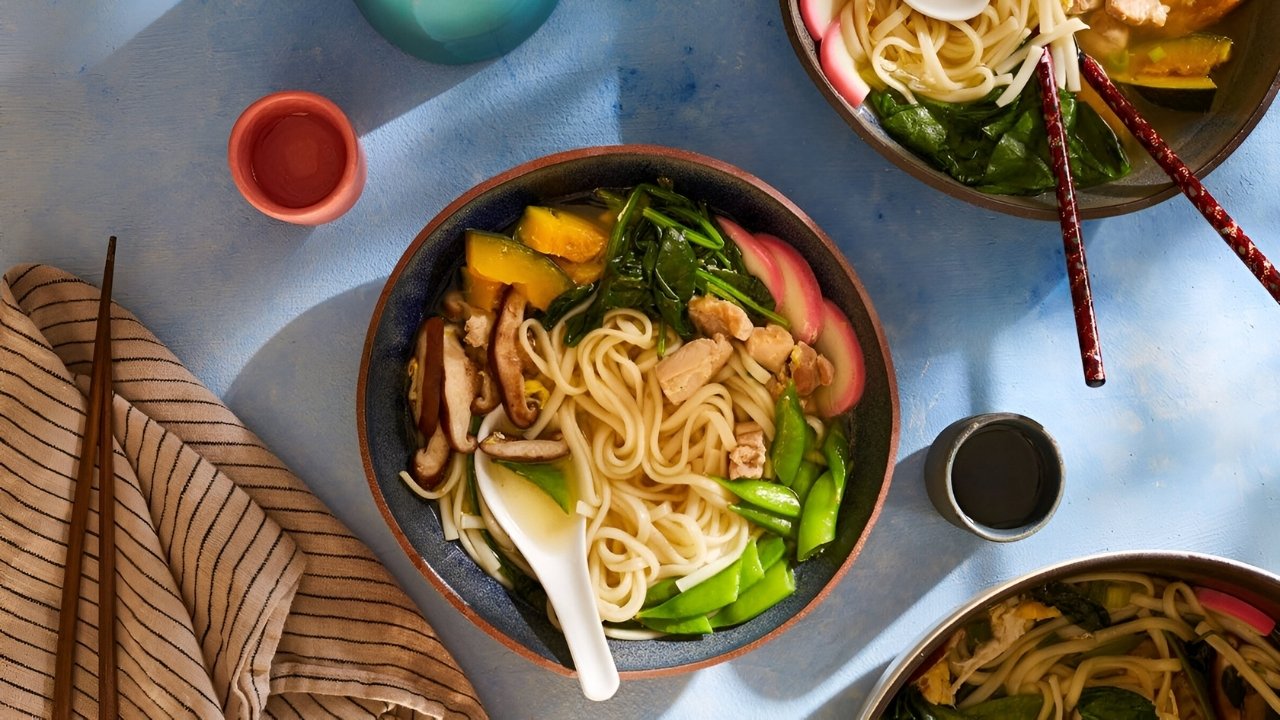
Udon is a type of thick, chewy noodle that has been a staple in Japanese cuisine for centuries. But what makes these noodles so special? Udon noodles are made from wheat flour, water, and salt, creating a versatile base for many dishes. Whether served hot in a savory broth or cold with a dipping sauce, udon offers a comforting meal option. These noodles can be found in various regional styles across Japan, each with unique flavors and ingredients. From the famous Sanuki udon of Kagawa Prefecture to the lesser-known Ise udon, there's a world of udon waiting to be explored. Ready to dive into 37 fascinating facts about udon? Let's get started!
What is Udon?
Udon is a type of thick, chewy noodle popular in Japanese cuisine. Made from wheat flour, water, and salt, these noodles are often served in a variety of broths and sauces. Let's dive into some fascinating facts about udon.
-
Udon noodles are typically 2-4 millimeters thick, making them one of the thickest noodles in Japanese cuisine.
-
The word "udon" is derived from the Japanese word "udong," which means "noodle."
-
Udon is believed to have been introduced to Japan from China during the Nara period (710-794 AD).
-
These noodles are traditionally hand-pulled, a process that gives them their unique texture.
-
Udon can be served hot or cold, making it a versatile dish for any season.
Types of Udon
There are many varieties of udon, each with its own unique characteristics and flavors. Here are some of the most popular types.
-
Kake Udon is the simplest form, served in a hot broth made from dashi, soy sauce, and mirin.
-
Kitsune Udon features a topping of sweet, fried tofu called "aburaage."
-
Tempura Udon is topped with crispy tempura, usually shrimp or vegetables.
-
Curry Udon combines udon noodles with a rich, flavorful curry sauce.
-
Zaru Udon is a cold version, served with a dipping sauce and often garnished with nori (seaweed).
Regional Variations
Different regions in Japan have their own unique takes on udon, reflecting local tastes and ingredients.
-
Sanuki Udon from Kagawa Prefecture is known for its firm, chewy texture.
-
Inaniwa Udon from Akita Prefecture is thinner and smoother than other types.
-
Miso Nikomi Udon from Nagoya is cooked in a miso-based broth, giving it a rich, hearty flavor.
-
Hoto Udon from Yamanashi Prefecture is flat and wide, often cooked with vegetables in a miso soup.
-
Ise Udon from Mie Prefecture is served in a dark, rich soy sauce-based broth.
Nutritional Facts
Udon noodles are not just delicious; they also offer some nutritional benefits.
-
A serving of udon noodles typically contains around 200 calories.
-
Udon is low in fat, making it a healthier option compared to other noodles.
-
These noodles are a good source of carbohydrates, providing energy for the body.
-
Udon contains small amounts of protein, essential for muscle repair and growth.
-
They are also low in sodium, especially when compared to instant noodles.
Cooking Techniques
Preparing udon can be an art form, with various techniques to enhance its flavor and texture.
-
Udon dough is often kneaded with the feet to achieve the perfect consistency.
-
The noodles are usually boiled in large amounts of water to prevent sticking.
-
After boiling, udon is often rinsed in cold water to remove excess starch.
-
Some recipes call for udon to be stir-fried with vegetables and meat.
-
Udon can also be baked in casseroles, adding a unique twist to traditional recipes.
Udon in Popular Culture
Udon has made its mark not just in kitchens but also in popular culture.
-
Udon is featured in many Japanese films and TV shows, often as a comfort food.
-
There are udon-themed restaurants and cafes across Japan, some even offering udon-making classes.
-
Udon has inspired various merchandise, including keychains, plush toys, and apparel.
-
The annual Sanuki Udon Marathon in Kagawa Prefecture celebrates this beloved noodle.
-
Udon even has its own emoji 🍜, reflecting its global popularity.
Fun Facts
Here are some quirky and fun facts about udon that you might not know.
-
In Japan, there's a saying that eating udon can help you live longer.
-
Udon noodles are sometimes used in non-traditional dishes like salads and pizzas.
-
Some udon shops in Japan offer "all-you-can-eat" deals, a dream for noodle lovers.
-
Udon can be dyed different colors using natural ingredients like spinach or squid ink.
-
There's a museum in Kagawa Prefecture dedicated entirely to udon.
-
Udon is often enjoyed during New Year's celebrations as a symbol of longevity.
-
In some regions, udon is served with raw egg, which cooks slightly in the hot broth.
Udon's Unique Charm
Udon isn't just a noodle; it's a cultural experience. From its origins in Japan to its variety of dishes, udon has captured hearts worldwide. Whether you prefer it hot in a broth or cold with a dipping sauce, there's an udon dish for everyone. Its versatility makes it a staple in Japanese cuisine and a favorite for many. Plus, the health benefits of udon, like being low in fat and high in protein, add to its appeal. Next time you're craving something comforting yet nutritious, consider trying udon. You might just find a new favorite dish. So, grab your chopsticks and dive into the delightful world of udon. Enjoy every slurp!
Was this page helpful?
Our commitment to delivering trustworthy and engaging content is at the heart of what we do. Each fact on our site is contributed by real users like you, bringing a wealth of diverse insights and information. To ensure the highest standards of accuracy and reliability, our dedicated editors meticulously review each submission. This process guarantees that the facts we share are not only fascinating but also credible. Trust in our commitment to quality and authenticity as you explore and learn with us.
